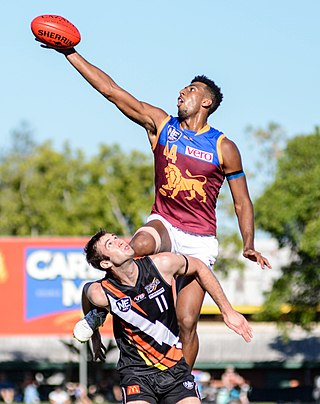
Australian rules football, also called Australian football or Aussie rules, or more simply football or footy, is a contact sport played between two teams of 18 players on an oval field, often a modified cricket ground. Points are scored by kicking the oval ball between the central goal posts, or between a central and outer post.
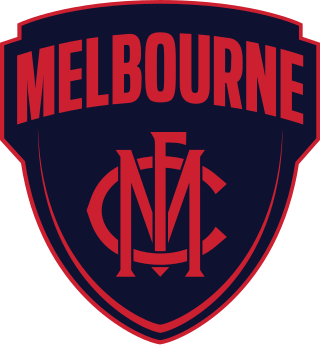
The Melbourne Football Club, nicknamed the Demons, is a professional Australian rules football club that competes in the Australian Football League (AFL), the sport's elite competition. It is based in Melbourne, Victoria, and plays its home games at the Melbourne Cricket Ground (MCG).

Thomas Wentworth Wills was an Australian sportsman who is credited with being Australia's first cricketer of significance and a founder of Australian rules football. Born in the British penal colony of New South Wales to a wealthy family descended from convicts, Wills grew up in the bush on stations owned by his father, the squatter and politician Horatio Wills, in what is now the state of Victoria. As a child, he befriended local Aboriginal people, learning their language and customs. Aged 14, Wills went to England to attend Rugby School, where he became captain of its cricket team and played an early version of rugby football. After Rugby, Wills represented Cambridge University in the annual cricket match against Oxford, and played at first-class level for Kent and the Marylebone Cricket Club. An athletic bowling all-rounder with tactical nous, he was regarded as one of the finest young cricketers in England.

The Melbourne Cricket Club (MCC) is a sports club based in Melbourne, Australia. It was founded in 1838 and is one of the oldest sports clubs in Australia.
The Champion of the Colony Award is a list that was compiled in the 1940s and 1950s by Australian rules football historian Cecil Clarence Mullen (1895–1983) for Mullen's Australasian Footballers' Almanac in 1950, for Mullen's Footballers' Australian Almanac in 1951, and for the History of Australian Rules Football in 1958.
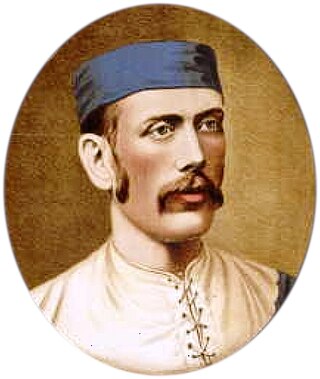
George Coulthard was an Australian cricketer, umpire and Australian rules footballer.
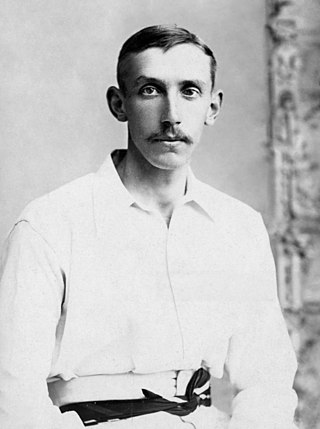
Hugh Trumble was an Australian cricketer who played 32 Test matches as a bowling all-rounder between 1890 and 1904. He captained the Australian team in two Tests, winning both. Trumble took 141 wickets in Test cricket—a world record at the time of his retirement—at an average of 21.78 runs per wicket. He is one of only four bowlers to twice take a hat-trick in Test cricket. Observers in Trumble's day, including the authoritative Wisden Cricketers' Almanack, regarded him as ranking among the great Australian bowlers of the Golden Age of cricket. He was named as one of the Wisden Cricketers of the Year in 1897 and the Australian Cricket Hall of Fame, established in 1996, inducted him in 2004.

Marn Grook, marn-grook or marngrook is the popular collective name for traditional Indigenous Australian football games played at gatherings and celebrations by sometimes more than 100 players. From the Woiwurung language of the Kulin people, it means "ball" and "game".
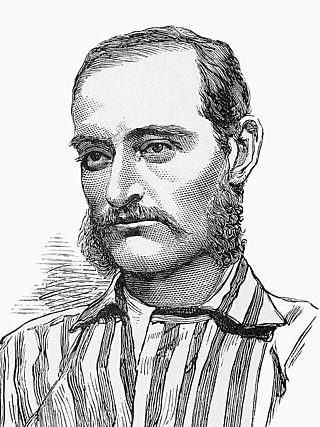
Francis Erskine Allan was an Australian cricketer who represented Victoria in first-class intercolonial matches and made one Test appearance for Australia. A tall, wiry left-arm medium pacer known by the sobriquet "The Bowler of a Century", Allan possessed great spin and a peculiar swerve which he claimed to have developed through his use of boomerangs and waddies growing up amongst Aborigines in the Victorian bush. He was also given the nickname "Kangaroo" because he would jump like a kangaroo to celebrate taking a wicket.

Henry Colden Antill Harrison was an athlete and Australian rules footballer who played a leading role in pioneering the sport.

Australian rules football in Victoria is the most watched and second most participated code of football. Australian rules football originated in Melbourne in the late 1850s and grew quickly to dominate the sport, which it continues to. Victoria has more than double the number of players of any other state in Australia accounting for approximately 42% of all Australian players in 2023 and continues to grow strongly. Only Soccer in Victoria has more football participants, though the code's growth in Victoria has made up much ground lost to that code over previous decades such that they have now a similar number of players. The sport is governed by AFL Victoria based in Melbourne. The national governing body, the AFL Commission is also based in Melbourne.

Australian rules football began its evolution in Melbourne, Australia about 1858. The origins of Australian football before 1858 are still the subject of much debate, as there were a multitude of football games in Britain, Europe, Ireland and Australia whose rules influenced the early football games played in Melbourne.
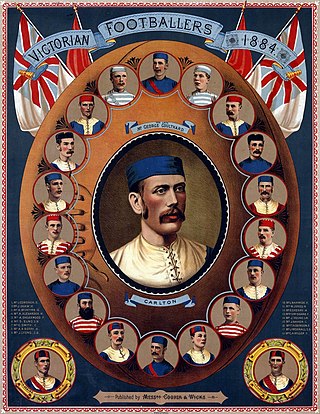
Australian rules football has had a significant impact on popular culture in its native Australia, capturing the imagination of Australian film, art, music, television and literature.
Australian rules football was first organised in Victoria in 1859 when its rules were codified by the Melbourne Football Club.

The origins of Australian rules football date back to the late 1850s in Melbourne, the capital city of Victoria.
James Bogne "J. B." Thompson was one of the creators of the original laws of Australian rules football, one of the founders and the inaugural secretary of the Melbourne Football Club, a cricketer for Victoria and the Melbourne Cricket Club (MCC), and a journalist for Melbourne newspaper, The Argus.

George Jeremiah Patrick O'Mullane was an Australian cricketer and Australian rules footballer. Born and raised in Melbourne, Victoria, O'Mullane was a standout cricketer from an early age, and came to be regarded as his colony's premier wicket-keeper. During the winter months, he excelled as a footballer in the nascent Australian game, receiving praise for his courage and strength.
Cricketer and Australian rules football pioneer Tom Wills is the subject of a growing body of works in art and popular culture.

Wallace Sutherland Sharland was an Australian rules football player, journalist and commentator. He played with Geelong in the Victorian Football League (VFL).
Cambridge University Australian Rules Football Club, founded in the early 20th century, is the Australian rules football club for Cambridge University. Both men's and women's teams represent the club in the National University League, the Fitzpatrick Cup, and the annual Oxford-Cambridge Varsity match, among other things.














